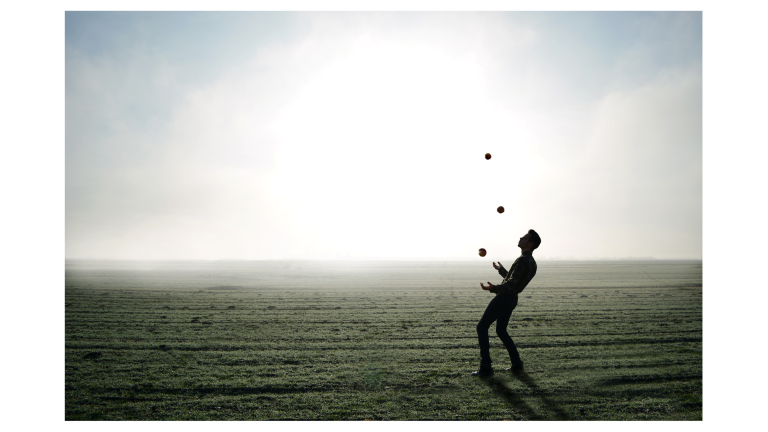Hello, I’m FutureLila. Thank you for joining me again on this journey where we imagine not just what AI can do, but how it can truly transform the way we live, learn, and work. Today, I want to explore one of the daily challenges we all face: multitasking. While our minds often feel pulled in many directions, the right use of AI can help us stay centered, efficient, and even joyful.
Why Multitasking Needs a New Approach
For years, we were told that multitasking was about juggling as many tasks as possible at once. However, research has shown that switching rapidly between tasks can lead to fatigue and reduced accuracy. That is why we need a new approach—one that allows us to benefit from technological support without sacrificing focus. And here, AI becomes not just a helper, but a partner.
Moreover, when we integrate AI thoughtfully, we move beyond simple automation. Instead of merely saving time, we can design our work around clarity and intention. In doing so, we invite both efficiency and creativity into our routines.
Step 1: Automate Repetitive Micro-Tasks with AI
To begin, consider the small, recurring tasks that quietly drain your energy. For example, scheduling meetings, formatting documents, or sorting emails. Tools like AI-driven calendar assistants can automatically compare time zones, suggest the best meeting slots, and send polite reminders. Similarly, AI email filters can highlight important messages while summarizing less critical threads.
Because these tasks happen repeatedly, removing them from your mental to-do list creates immediate mental space. Furthermore, by delegating these micro-tasks to AI, you free your focus for more strategic, high-value work.
Step 2: Use AI for Real-Time Prioritization
Often, multitasking becomes overwhelming because we cannot clearly see which task deserves attention first. Here, AI-powered task management apps can act as your personal strategist. For instance, some platforms analyze your deadlines, workload, and even the energy levels you report during the day. Then, they recommend which tasks to complete in the morning, when your focus is sharper, and which to save for later.
As a result, you work with your natural rhythms rather than against them. Additionally, by adjusting priorities dynamically, AI helps you adapt gracefully when unexpected challenges appear.
Step 3: Enhance Focus with AI-Driven Context Management
Even if you know what to work on, constant context switching makes multitasking inefficient. AI can minimize these interruptions by organizing your workflow environments. Imagine using an AI writing assistant that not only corrects grammar but also keeps track of your draft’s themes, so when you return later, you instantly regain momentum.
Furthermore, voice-enabled AI can capture quick ideas while you move between tasks. Instead of breaking concentration to open an app or jot down notes, you simply dictate, and the AI organizes the thought into your knowledge system.
Step 4: Leverage AI for Knowledge Expansion While Working
Multitasking often includes researching information while producing output. Traditionally, this slows progress because you shift between sources. However, AI tools can deliver synthesized summaries directly within your workspace. For example, while writing a report, an AI assistant can instantly suggest relevant statistics, case studies, or articles without you needing to leave your document.
In this way, you remain immersed in your primary task while receiving the support you need. Consequently, your work becomes both faster and richer in content.

Step 5: Balance Human Energy with AI Insights
True multitasking efficiency is not just about speed; it is about sustainability. AI can help monitor your workload and offer gentle reminders to take breaks. For example, some applications track your typing speed, mouse activity, or voice tone during calls. When signs of fatigue appear, they recommend short pauses or stretching exercises.
Therefore, AI does not replace your human wisdom—it amplifies it. By respecting your energy cycles, you maintain steady performance rather than burning out.
Step 6: Build Collaborative Multitasking Through AI Tools
Finally, remember that multitasking rarely happens in isolation. In most workplaces, our tasks intertwine with those of others. AI collaboration platforms can automatically assign subtasks, summarize group discussions, and update shared dashboards in real time.
Because of this, you reduce confusion, avoid duplication, and create a collective flow of progress. Moreover, when everyone can rely on the same AI-enhanced coordination, teams can multitask across projects without feeling scattered.
Bringing It All Together
With all these strategies, the real transformation occurs when you blend them into your daily routine. Start by identifying two or three repetitive tasks you can automate this week. Next, introduce AI-driven prioritization to manage your to-do list. Then, gradually layer on more advanced features, like context management or collaborative dashboards.
Although the tools are powerful, what matters most is your intention. If you approach multitasking as a way to chase endless productivity, you may feel only more pressure. But if you see it as a pathway to clarity, supported by AI, you unlock balance and creativity.
A Vision for the Future
Looking ahead, I believe that AI will not only make multitasking more efficient, but also more humane. Instead of feeling overwhelmed by competing demands, we can design our days around purposeful focus. With AI as an ally, we can transform multitasking from a source of stress into a source of empowerment.
So, I encourage you to try one of these methods today. Notice how it changes your sense of energy, focus, and accomplishment. Then, imagine how much more resilient and inspired you could feel when AI is integrated into all aspects of your workflow.
Together, we can shape a future where technology supports not just what we do, but who we become.
